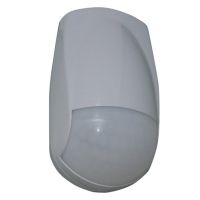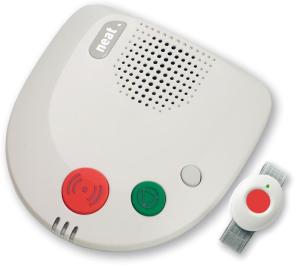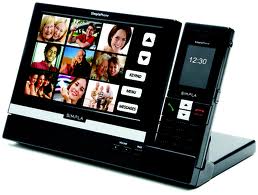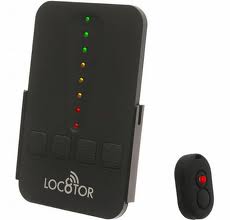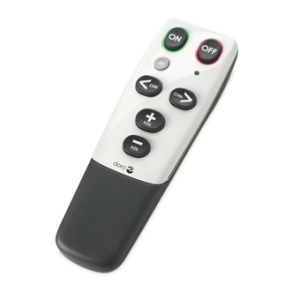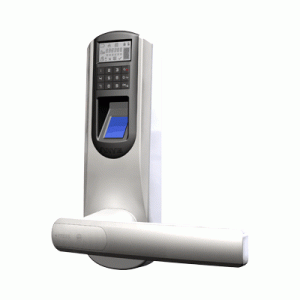Assistive Technology Project: Within Oxfordshire Learning Disabilities Teams.
INTRODUCTION:
Assistive Technology [AT] has been defined as ‘any device or system that allows an individual to perform a task that they would otherwise be unable to do, or increases the ease and safety with which the task can be performed’, Cowen and Turner Smith: 1999.
Numerous reports and articles have been published reporting the benefits of AT to enable older and ‘disabled people’ in leading a safer more independent lifestyle. From research into such reports there are very few which document the benefits AT can have for an individual with a learning disability in leading a more fulfilled independent life. When the opportunity for an Occupational Therapist keen to specialise in the field of Assistive Technology arose I was keen to apply. The position involved completing an Assistive Technology Project for one year [July 2010 – March 2011] within the community learning disabilities services throughout Oxfordshire [north, city and south]. The Projects key aim was to promote and facilitate the rights, independence, choice and inclusion of people with a learning disability [Government paper, ‘Valuing People’] as well as using AT to help reduce costs within the NHS . The Assistive Technology project also included, very importantly, support and inclusion of clients families and carers in the understanding of AT and the benefits it would have for someone with a Learning Disability.
Between 2006 and 2008 a preventative Technology Grant was provided to councils throughout the United Kingdom to initiate and develop services in Telecare and Assistive Technology. OxfordshireCounty council have used the Preventative Technology grant to provide alarms and/or sensors by linking individuals’ telephone lines to a control centre [Telecare]. Oxford city and Cherwell District council also offer an emergency visiting response. The Council are aware there are other ways in which assistive technology can be provided and other devices and equipment available that would enable further independence whilst reducing care costs for more able individuals. Oxfordshire County Council and Ridgeway partnership are working closely with one another to provide these devices and equipment, as a result I was employed to look at alternative ways of meeting individuals needs, within the Learning Disability service, using new and existing products in the market.
Assessment and Provision of AT:
There are many ways to assess and provide Assistive Technology within various services and there is no one consistent approach to providing advice and equipment within Oxfordshire. Evidence of this is as follows:
- After assessment and intervention of a clients physical and cognitive ability, an Occupational Therapist can provide equipment best suiting that individuals needs, however this all depends on the Therapist’s knowledge and understanding of Assistive Technology.
- The Independent Living Centre [Guideposts Trust] in Witney, West Oxfordshire has a range of equipment including manual handling equipment as well as bath boards, large handled cutlery etc. This equipment can be viewed and tried at Guideposts and an OT with knowledge of these particular devices will provide information on where a client can privately purchase their equipment.
- Within the supported living service the learning disability teams have come forward in supporting and educating people with a learning disability and their families and carers on assistive technology. However an evaluation of some of the equipment in 2006 showcased that it could be too sophisticated and complicated for individuals to use. As part of my role it is to look into this equipment and strive to find equipment that is less complicated to use so people can become more independent. An Assistive Technology form within the Learning Disabilities services exists to share ideas and opinions on AT and provided recommendations on certain pieces of AT that would benefit clients with a Learning disability.
- Clients who meet substantial or critical need can be provided with equipment from the sensory impairment team through Millbrook. Millbrook Healthcare works in partnership with numerous Councils and Primary Care Trusts around the UK, supplying daily living aids and products to help their residents live in their own homes.
Aims of Pilot Project:
In order to develop the area of Assistive Technology within the Learning Disability Services further within Oxfordshire this pilot project aimed to:
- Evaluate whether Assistive Technology assists a client with a Learning disability to undertake a specific task
- To evaluate whether assistive technology benefits clients with a learning disability to increase independence and safety within everyday life in the community or within their own home.
- To evaluate whether Assistive Technology reduces carer input and reduce carer anxiety in relation to caring.
- To identify assistive technology that is not too sophisticated or complicated and to ensure that the client finds that it benefits them in everyday life
- To identify not only the advantage of Assistive Technology but also any issues that arises as a result of AT provision.
- To document where savings can be made and where they can’t and why. The impact of these savings on the NHS.
Literature Review:
A literature review was undertaken to gather information and knowledge of existing research of the usability and ease of use of assistive technology. It was important that as much information as possible be gathered prior to liaising with clients, carers and families from the learning disabilities teams, to ensure a high level of understanding and competence was achieved. Information was gathered from search engines such as: Medline, HMIC, Cinahl Amed and Psycinfo. Search terms to assist with this research include: Learning Disabilities, Assistive Technology, Telecare, Increasing independence, increasing safety within the home, carer stress, physical disability, dementia and quality of life.
As a result of researching search engines and identifying the client group associated with this project a total of 63 articles were found. Majority of these articles discussed the use of assistive technology for individual with physical disabilities, dementia and the elderly but few incorporated a client with learning disabilities. These articles focused mainly on the larger picture of Assistive Technology, defining it as ‘ANY device or system that allows an individual to perform a task that they would otherwise be unable to do, or increases the ease and safety with which the task can be performed’ Community Health Care And Services For Older Persons”, 2004. As this project’s main focus is clients with learning disabilities and their carers this definition is too broad. Equipment such as bath boards, hoist etc were discounted as this project wanted to hone in on the Assistive Technology that is available which is easy to use, not too sophisticated and electronic not just ‘any device or system’.
One of the search terms indicated in the search engine was dementia. Many articles reported that Assistive Technology assisted clients with dementia by increasing quality of life, independence, increased safety and reduced carer stress; Enable:, 2008, Norfolk, CC:, 2008, Jensen et al:, 2004. Out of these articles there was very minimal information on individuals with dementia who also had a learning disability. As a result I completed a case study of a gentleman with early onset dementia with Downs syndrome, [Please see Appendix 1]
The information research from the Tate Project was one which focused on clients with Learning disabilities and Assistive Technology. The Tate Project highlighted the effectiveness of Assistive Technology in increasing safety, independence and opportunities for employment for clients with learning disabilities [www.tateproject.org.uk].
It is clear from completing this research on Assistive Technology with Learning Disabilities that a lot of people are still very much unaware of the effectiveness of AT within the LD services. A lot more research needs to be completed and awareness of Assistive Technology by individuals, carers and health and social care professionals is needed; Cash:, 2004.
Methodology:
Recruitment:
From discussion and time spent with health and social care professionals it became clear many had little awareness of the types of Assistive Technology available. At the beginning of the project an email was sent out to all of Ridgeway and Oxfordshire county council employees informing them that an Assistive Technology Project would be taking place from July 2010 to March 2011. For the first month numerous visits were made to the LD teams in the county to explain the purpose of the Assistive Technology project, to demonstrate AT and to discuss referrals at referral meetings. Within these referral meetings referrals were requested for any appropriate clients and any individual who may benefit from the AT project. Referrals were very slow at the beginning of the Project as health and social care employees were still very uncertain of the criteria at which a client would be accepted. Further explanation and demonstrations were provided and soon clients were being referred for the AT project. Initially it was thought that there would be 7 participants involved within the project. However as time and resources were limited it was agreed 5 was a more realistic number. The main criteria for referrals were that all clients had a learning disability and that a substantial amount of money be saved throughout the course of a year.
Equipment:
Types of Assistive Technology used were chosen on Individual Assessment. At the beginning of the project it was clear that we wanted to look into AT that was unsophisticated and easy to use, therefore no equipment was set originally and assessment of the client allowed me to research equipment that may be of benefit to them personally. It was clear from the beginning also that we did not want to use the same standard equipment used and provided through the preventative technology grant but to look into new, alternate equipment that our clients themselves could use as well as their carers. Some equipment used in this project includes:
- Buddi System
- Stand Alone Telecare – Door sensors and Care assist pager
- Stand alone epilepsy sensors
- Lo8or
- SimplaPhone
Consent:
All clients and carers involved in the project agreed to participate in the project. However to ensure confidentiality some information in the case studies will be changed to honour confidentiality.
Results:
Although many referrals were received, only 5 individuals were selected as being appropriate for the AT Project. Out of these five 1 was from the city and 4 from the North.
Task identified:
The clients who participated in the project identified a task which they were finding the most difficult, these included:
- Social Contact and Support: Using the telephone to speak with family friends and carers
- Risk reduction: Reducing risk to client at home, in the community, and on public transport.
Equipment Used:
Below is a brief description of the Assistive Technology used in the AT project, as well as the Advantages and Disadvantages.
Brief description: The buddi system is a small device which can either fit easily into a pocket, be attached to a lanyard that can be put around your neck under your clothing allowing discretion or attach to your belt with a buckle. The system can locate someone wearing the buddi via the secure member’s area on the website, or by phone or text message [Phone and text at a price]. Buddi uses assisted GPS [global positioning system] technology to calculate its location and uses the mobile phone network to send the current location to a computer via google maps
Advantages: Can provide greater independence and freedom to clients with dementia and learning disabilities. It can also provide reassurance and reduce anxiety for family and carers. The system cannot be switched off; however it is still unclear whether this is an advantage or a disadvantage. Easy to plug in at night like a mobile phone.
Disadvantages: Requires phone coverage to ensure it works properly. The buddi system can be thrown away once client is out in the community if they don’t like it any more. The emergency button is too sophisticated for clients with moderate to profound LD to use. Expensive for the system and monthly payments need to be made.
Brief Description: The property exit sensor is a small rectangular white box which is positioned above the door and comprises a PIR [Passive Infra Red] movement detector, door contacts and a telecare interface module which together detect if someone has walked out of the door and not returned. There is an on/off switch on the alarm to allow you the opportunity to switch off the alarm if you are out of the house. The door alarms usually work via telecare when the door is opened it will send a call through to a call centre, however for the clients in question who were provided with this AT it was used as a stand alone piece of equipment. This means there was no call centre and no monthly fee. The carers in the property were provided with a Care Assist [pager] and if the door was open it would send an alert through to the pager.
Advantages: Reduces carer stress and allows immediate action to be taken if a client leaves the property alone if they are unsafe to do so. Independence and safety for the client as if they want to sit in the garden the carers know that is where they have gone.
Disadvantages: Alerts will be sent through to the pager every time the door is opened whether this is a carer, another resident of the property or the post man. The vibration of the care assist is quite loud and intrusive.
Brief Description: The bed occupancy sensor is designed to automatically raise an alarm if a client has not gone to bed by a predetermined time, has not got out of bed by a predetermined time or gets out of bed and does not return within a certain amount of time. The Bed occupancy sensor consists of a bed pressure pad, which is placed underneath the mattress of the user. When linked with a care assist [pager] the bed sensor assists carers to manage the risk associated with the independent living by raising an alarm should the user get out of bed and not return by a specific time. The sensor provided on this project was linked to a care assist and to a lamp which automatically turned on when the client got out of bed.
Advantages: Increase client safety at night. Increase independence and quality of life not having someone checking on you all the time. Reduction in carer stress.
Disadvantages: If the bed occupancy sensor is not positioned correctly it may not detect movement. If the sensitivity is set too high or too low it can either not work or send an alert through to the pager every time the client moves.
Brief Description: The Neo Care Phone provides vulnerable people with the security and confidence to live independently by providing an easy to use way of calling for help in an emergency. The ATOM pendent is an alarm that links easily with the Neo phone. A client can press the button on the ATOM at any stage to alert carers if there are any issues. The ATOM is also a receiver and will show a green light on the pendent when the call has been received by the user. The Neo phone that was set up by researcher also had added extras such as a smoke detector and carbon monoxide detector build in that automatically contacted the carer.
Advantages: If the call goes through to an answering machine it doesn’t assume that contact has been made and will continue to contact the persons in question. Easy to use – just press a button. Contact number will have been pre set up by Possum engineer. Allow safety and independence for the client to live alone. Allows peace of mind for carers.
Disadvantages: If the client is ill or has fallen without their pendant they would be unable to call for help if they are not wearing the pendant. Numbers are pre set so if client wants to contact friends they would be unable to on this phone.
Brief Description: The simplaphone is an everyday telephone with a picture screen for photographs. The simpla phone needs to have a phone and electrical socket in close proximity to where the phone is to be placed and used. Carer support is advised to take the photos and to input the data [pictures and telephone numbers]
Advantages: Minimal teaching needed as very simple to use. Service users picked up how to use the phone after only 4 – 5 visits from OT to teach and prompt how to use it. Service users who tried it reported that it is easier to use than a “normal” telephone. It allows individuals to be more independent as they don’t have to call a number only touch the face they wish to contact and press the green button. It increased confidence in service users as they felt more comfortable staying at home alone with the knowledge they could contact a family member at the touch of a button at any time. It reduced family stress as they were able to contact their family member easily. Reduced anxiety about incoming calls as they were able to see the picture of who was calling. Hands free allowed service users with hearing difficulties as was louder than hand held device. Also allowed clients to liaise with family and friends who have difficulty holding the handset.
Disadvantages: Relies on carer support to set up the phone. Incoming caller alert not available on all phone lines. Ensuring that the phone and electrical socket close to one another. If not another BT line would have to be installed.
Brief Description: Locator is a hand help device which is set up to smaller tags. Tags are registered on the device so if the item with the tag is misplaced or lost the locator hand held device will find them more quickly. Tags can be attached to bags/keys etc. Tags are located using audio and visual cues.
Advantages: Able to find items more quickly. Reduction in carer and service user stress as items can be found more quickly.
Disadvantages: Relies on carers in some instances not all. Locator device can be lost if not kept in the same place. Risk of device not working sufficiently. This happened on two occasions and Locator had to be discontinued as was increasing stress levels rather then reducing them.
Brief Description: This remote is a very basic television remote control. Batteries are inserted into the back of the device. Current remote control of existing appliance needs to teach Doro Remote new commands.
Advantages: Easy to use, large buttons with non complex options [on/off; volume up/down].
Disadvantages: The Doro doesn’t collaborate with all televisions makes and models. For televisions with sky and digital TV, an additional control is needed.
Brief Description: The fingerprint locking system was set up prior to AT project commencing. The locking system consists of a fingerprint touch pad which individuals put their finger on to allow access. Up to 1000 finger prints can be processed on this system.
Advantages: No need for keys or fob system. Allows individuals to gain easy entry and exit from property. Allows individuals with difficulty holding a key to be independent and remain safe as they can enter their property.
Disadvantages: Very heavy and needs engineering to set up fingerprints and set it up on the door. The device and set up can be very expensive. Needs regular checks which can be quite complex. If the electronics stop working or the battery fails service users will need carer support either to get the key out or to contact the company to assist.
Limitations:
The Limitations include:
- Reduced knowledge and awareness of AT by Health and Social Care professionals [Limited referrals received from colleagues and carers at the beginning of the project]
- Time available for service users to trial the equipment
- A Lot of service users needed carer support to use the AT and prompt to use
- Agencies and companies delaying equipment delivery and fitting
- Difficulty getting a Purchase Order number originally as no one knew who could raise a PO number.
- Consent
- Part time Project.
- Lack of OT Tech support.
Discussion:
From the research obtained from completing the project it is clear that AT can have many benefits for individuals with learning disabilities. The benefits include improving client independence, reducing client and carer stress, saving money on unnecessary care and increasing safety for the service user whilst on their own. However Assistive Technology is very person specific and no two people can use the same equipment in the same way.
Professional Awareness
One of the main limitations in this project was the limited knowledge and awareness of Assistive Technology from Health and Social Care professionals. At the beginning of the project it was clear there was minimal awareness of specialist Assistive Technology due to the lack of referrals. In order to obtain more referrals for the project the researcher visited all 3 Learning Disabilities Teams in Oxfordshire – North, South and City as well as visiting Supported living, residential and respite services. As part of these visits the researcher provided hands on demonstrations of Assistive Technology and presentations of AT. These visits had to be completed a few times as not all members were present on the first few occasions. Following these visits referrals increased. Also as a result members were becoming more aware that AT was out there for their clients and approached the researcher to ask questions and to gain more knowledge on the subject. From the literature available Professional knowledge and awareness is paramount to receiving earlier referrals and providing earlier intervention to allow service users to stay independent and safe with the help of AT [Gillingham et al; 2006, Jensen; 2005].
Time
The Assistive Technology Project was funded from July 2010 to the end of March 2011. It was decided at the beginning of the project that service users taking part would trial the AT for 8 – 12 weeks to help them get used to the AT, however this didn’t always happen. Due to time restrictions, busy schedules from both carers, clients and researcher many clients only got to use the equipment for 4 – 6 weeks and it was reported that this was not long enough by at least 3 service users and their carers. It was reported that if the service user were to have the equipment for longer they would have been able to gain further independence and allow them to spend more time alone without care. In order to ensure that clients benefit more from AT in the future it is imperative they are given the AT to trial for a longer time period.
Carer Support
A lot of the equipment provided relied on the support and encouragement of carers/support workers to set up the equipment. Support worker input was very important to help the service user learn how to use the equipment and to remind them to use it within their every day life. Service users living independently may require assistance to maximise the use of AT in the community and ensure the service user is using the AT to maximise their independence and safety. The results of service users living with carers reduces costs by preventing more care being provided. For those clients living independently the results show a reduction in carer costs as AT assists with activities which a carer would provide. This shows an increase in independence and reduction in over all carer costs.
Monitoring and Review
All of the equipment provided needs regular checking and reviewing of the battery, and to ensure the equipment is still fit for use for the client. For clients who are living independently in the community without carer support they are at risk of relying too much on the equipment and issues could then arise if equipment needs changing or breaks down. Ongoing support and review is very important to ensure that AT continues to benefit clients in the community, living alone and in supported living [Woolham; 2005]
Purchase Order
To purchase equipment the researcher had to ensure cheaper equipment alternatives were looked at and that the AT provided would reduce costs or prevent further costs from accumulating. Reports and clinical reasoning was sent to the team manager to approve. Once this was approved a Purchase Order [PO] number had to be raised to buy equipment. As researcher had no access to raise PO number it was left for the administrators to raise. Initially this was an issue as majority of the Admin staff did not know how to do this. It took over 2 weeks to locate the administrators who knew how to raise a PO number. As a result the time spent searching for the appropriate person was wasted as it could’ve been used assessing someone for AT.
Part time Project
The AT project was only funded for 26 hours a week. The 26 hours was worked in 3 days. Issues arising here was that clients or their carers were not available on the days researcher wanted to visit, delaying assessment and provision of equipment. It also delayed equipment being delivered as companies could only deliver on certain days and researcher was not always available or had already worked the 26 hours in that week. This was overcome by researcher working longer hours or coming in on another day to complete assessment, however this was not always possible. To ensure that this project runs smoothly it would be beneficial to have a full time member of staff working on the project.
Lack of Occupational Therapy Technician Support
As the researcher only had 26 hours/ week to complete assessments, paperwork make phone calls etc, it would have been beneficial to have an OT Technician to support OT with the project. The technician, even if part time, could assist with taking client out to trial AT for OT and report back any issues or if further Assessment needs to be carried out. Having a technician would also assist OT with phone calls and ADL practice that researcher was unable to do as a result of time restraints.
Recommendations:
To develop Assistive Technology Provision
As the Assistive Technology Project was spread throughout the whole of Oxfordshire agreeing equipment purchase had to be completed either by the LD Service Manager or individual managers for each team [north, south, city]. It would be more beneficial if there was just one manager who agreed equipment purchase rather than 4. This would make the process run a lot smoother.
An email should be sent to all the teams with clear concise instructions on who can order equipment and who can agree to the funding for this equipment outside panel [discussion on equipment/ care funding for a client once a month].
For OT’s to take front line when ordering equipment and be given Telecare training to allow therapists to fit and set up equipment without waiting for an engineer. This would save time and money as an engineer costs £138 per order to fit equipment.
Encourage self purchase where possible. With the new Self Directed Support [SDS] system in place the use of AT could be incorporated within this. Close working with the Care Managers from each team is imperative to this becoming successful.
Ongoing support for clients living independently in the community is very important. Care Managers, OT’s and OT Technicians should work together to have a review of equipment, initially 3 – 4 times in the first two years and then once a year to ensure everything is working well. Clear concise information, telephone numbers, addresses of Health and Social Care professionals as well as Information of the relevant companies, to be provided and encourage client to stick on calendar or wall so that they are within reachable distance if any issues arise.
Increase awareness among Health and Social Care Professionals
Clarification of roles between Assistive Technology Specialist/Lead OT and Contracts and reviews team to ensure no one over laps or sees the same client twice – reduce time efficiency.
To ensure that the above posts work along side one another for maximum savings and benefits to service users. If the researcher had more contact with this team and a little support, time constraints may not have been so prominent.
Consider developing/sharing assessment and evaluation tools to ensure consistency across the service – health and social care.
Increase awareness of AT among other services such as, physical disability, enablement services; mental health services, sensory impairment services, Brokers, older peoples teams, GP Practices and other Occupational Therapy teams across Oxfordshire. Within these teams to have an Assistive Technology Champion, and to have assistive technology demonstration kits readily available for everyone to use. Currently there are kits available but they are not available for everyone and not easily accessible.
For further funding to be available to purchase equipment and ensure the AT specialist and the champions to know who to liaise with to access this.
Arrange AT demonstrations within the 3 teams once a year to ensure new health and social care employees are up to date as well as continuing to educate other professionals on the new AT that is available currently and becoming available.
Disseminate the findings from this report within the Learning Disabilities Teams and to consider wider audiences.
Further Evaluation
The AT Project was a success as the researcher was given a target to save £50,000 in 8 months to save within the Learning Disability service and this was exceeded. By providing AT we were able to reduce the cost of care or prevent it from being put into place. The AT allowed clients to become more independent and safe within the community and within their own home environment. As this project was a success it would be beneficial to continue with this project and try and branch out to newer more high tech AT that once installed is easy to use within the LD Community. There were many pieces of AT that the researcher found that would have been beneficial to many clients however due to the time restrictions this technology was unable to be trialled. Further evidence needs to be gathered on the long term benefits of AT to gather a wider understanding of the cost savings and client benefits in the future.
Although this project was a success there were also many unsuccessful AT installations. This happened on a number of occasions where clients did not use the AT as they were not prompted or lived alone and don’t have the support of a carer, family member or friend to remind them. Other service users didn’t like the technology once it was installed and refused to use it resulting in failed trials. Other equipment such as the Buddi didn’t work with everyone as it entailed keeping the system on at all times. Many clients threw it away or broke it as they had forgotten why they had it in their possession.
Over all the Project was a success and the LD service would benefit from Long term work with AT for clients in the community.


